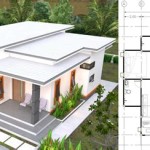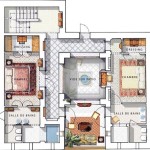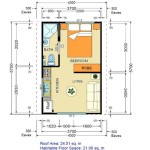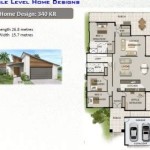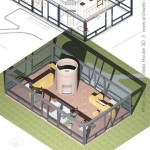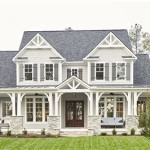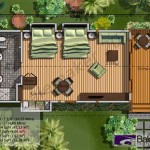Craftsman Cottage Style Home Plans: A Timeless Blend of Charm and Practicality
Craftsman cottage style home plans represent a harmonious fusion of the American Craftsman movement and the cozy, intimate characteristics of a traditional cottage. This architectural style, popular from the late 19th century through the 1930s, emphasizes natural materials, handcrafted details, and a connection to the outdoors, creating homes that are both aesthetically pleasing and highly functional. The appeal of the Craftsman cottage endures, captivating homeowners with its warmth, character, and adaptability to modern living.
The allure of the Craftsman cottage style extends beyond mere aesthetics. These homes are designed with a focus on practicality and efficiency, often incorporating features like built-in storage, open floor plans, and energy-conscious designs. The integration of these elements contributes to a living experience that is comfortable, convenient, and well-suited to the needs of contemporary families. Furthermore, the emphasis on natural materials and sustainable design principles aligns with the growing awareness of environmental responsibility, making the Craftsman cottage a compelling choice for environmentally conscious homebuyers.
Defining Characteristics of Craftsman Cottage Architecture
The Craftsman cottage style is defined by a distinct set of architectural features that contribute to its unique character. These elements are thoughtfully integrated to create a cohesive and visually appealing design. Understanding these defining characteristics is crucial for identifying and appreciating the authentic Craftsman cottage aesthetic.
One of the most recognizable features is the low-pitched roof, typically with wide overhanging eaves. These eaves provide shade and weather protection, while also adding visual interest to the roofline. Gable roofs are common, often featuring exposed rafters or decorative brackets that accentuate the handcrafted nature of the design. Dormers are frequently incorporated to add light and ventilation to the upper levels of the home.
The exterior of a Craftsman cottage often showcases natural materials such as wood siding, stone accents, and brick details. Horizontal clapboard siding is a popular choice, often combined with shingle siding in gables or dormers. Stone or brick is commonly used for foundation walls, porch piers, or chimney stacks, adding texture and visual weight to the base of the house. The use of these natural materials contributes to the warm and inviting character of the Craftsman style.
Porches are an integral part of the Craftsman cottage design, serving as a transition space between the interior and exterior. Front porches are typically covered and supported by substantial columns or piers, often made of wood or stone. These porches provide a welcoming space for relaxation and socializing, enhancing the connection between the home and its surroundings. Details such as tapered columns, exposed rafters, and decorative brackets add to the handcrafted appeal of the porch.
Windows in a Craftsman cottage are often multi-paned, particularly in the upper sashes. Double-hung windows are common, allowing for efficient ventilation. Casement windows may also be used, especially in areas where natural light is desired. Window trim is typically substantial and often features simple, clean lines. The use of grilles or muntins in the windows adds visual interest and contributes to the overall aesthetic.
Interior details are equally important in defining the Craftsman cottage style. Wood is a dominant material, used for trim, doors, and built-in features. Exposed beams, wainscoting, and hardwood floors are common elements that contribute to the warm and inviting atmosphere. Fireplaces are often a focal point of the living room, featuring a brick or stone surround and a substantial mantel. Built-in bookcases, cabinets, and seating areas are frequently incorporated to maximize space and functionality.
Key Considerations When Choosing Craftsman Cottage Home Plans
Selecting the right Craftsman cottage home plan requires careful consideration of several factors, including the homeowner's lifestyle, budget, and site conditions. A well-chosen plan will provide a comfortable and functional living space that reflects the homeowner's personal style and meets their specific needs.
One of the primary considerations is the size and layout of the home. Craftsman cottages are typically smaller in scale than larger homes, but they can still accommodate a variety of living arrangements. The number of bedrooms and bathrooms, the size of the living areas, and the presence of a home office or other specialized spaces should be carefully evaluated. Open floor plans are a common feature of modern Craftsman cottages, allowing for a seamless flow between the living room, dining room, and kitchen. The layout should also consider the placement of windows and doors to maximize natural light and ventilation.
Budget is another important factor to consider when choosing a Craftsman cottage home plan. The cost of construction can vary significantly depending on the size of the home, the materials used, and the complexity of the design. It is important to establish a realistic budget and to select a plan that falls within those parameters. Consider prioritizing features that are most important to the homeowner and making compromises on less essential elements. The use of sustainable materials and energy-efficient technologies can also help to reduce long-term operating costs.
Site conditions can also influence the selection of a Craftsman cottage home plan. The topography of the land, the orientation of the lot, and the climate of the region should all be taken into account. A plan that is well-suited to the site will take advantage of natural features such as sunlight and views, while also minimizing potential challenges such as drainage problems or exposure to harsh weather. Consider working with an architect or builder who is familiar with the local area and can provide guidance on site-specific considerations.
Accessibility is another crucial point to consider, especially with aging in place in mind. Incorporating features like wider doorways, ramps (if applicable), and grab bars in bathrooms can make the home more accessible for individuals with mobility limitations. Even if accessibility is not a current concern, planning for the future can ensure that the home remains comfortable and functional for years to come.
Modern Adaptations and Customization Options
While the Craftsman cottage style retains its timeless appeal, modern adaptations and customization options allow homeowners to tailor the design to their individual preferences and lifestyle. These adaptations can range from subtle modifications to more significant changes, while still preserving the essential characteristics of the Craftsman aesthetic.
One common adaptation is the incorporation of modern amenities and technologies. Updating the kitchen and bathrooms with contemporary appliances, fixtures, and finishes can enhance the functionality and comfort of the home. Smart home systems can also be integrated to control lighting, heating, and security features, adding convenience and energy efficiency. These modern additions can be seamlessly blended with the traditional Craftsman details to create a cohesive and balanced design.
Another popular trend is the addition of outdoor living spaces. Patios, decks, and outdoor kitchens can extend the living area of the home and provide opportunities for relaxation and entertainment. These spaces can be designed to complement the Craftsman style, using natural materials and incorporating features such as pergolas, fireplaces, and seating areas. A well-designed outdoor living space can enhance the connection between the home and its surroundings.
Customization options allow homeowners to personalize the Craftsman cottage to reflect their individual style and preferences. The choice of materials, colors, and finishes can have a significant impact on the overall look and feel of the home. Consider selecting materials that are sustainable and environmentally friendly, and choosing colors that complement the natural surroundings. Interior details such as lighting fixtures, hardware, and furniture can also be customized to create a unique and personalized space.
Furthermore, homeowners can adapt the floor plan to better suit their specific needs. This might involve reconfiguring the layout of the kitchen, adding a home office, or creating a larger master suite. When making these modifications, it is important to maintain the essential characteristics of the Craftsman style, such as the use of natural materials, the emphasis on handcrafted details, and the connection to the outdoors. Working with an architect or designer who is experienced in Craftsman architecture can help to ensure that the adaptations are seamlessly integrated and consistent with the overall design.
Ultimately, Craftsman cottage style home plans offer a versatile and timeless design that can be adapted to meet the needs of modern living. By understanding the defining characteristics of the style, carefully considering the key factors, and exploring the available adaptation and customization options, homeowners can create a home that is both beautiful and functional, reflecting their personal style and providing a comfortable and inviting living space.

Small Craftsman Cottage Plan 94371 At Family Home Plans In Our Best Ing Floor Collection Style House

1 Story Modern Cottage Style House Plan Spaulding Craftsman Plans Farmhouse

Craftsman Cottage House Plan 117 1102 4 Bedrm 2482 Sq Ft Home

Craftsman Style House Plan 3 Beds 2 Baths 1421 Sq Ft 120 174 Dreamhomesource Com

3 Bedroom Craftsman Cottage House Plan With Porches

Craftsman Style Home Plans
:max_bytes(150000):strip_icc()/SL-1870_FCP-17f67fde84454f06aac8ab0f8056c01b.jpg?strip=all)
20 Craftsman Style House Plans We Can T Get Enough Of

Plan 65870 Craftsman Cottage With Basement Option Bonus

Craftsman Style House Plan 3 Beds 2 5 Baths 1698 Sq Ft 120 168 Houseplans Com

The Hayes Miller Craftsman Home Plan With Bungalow Front Porch Homepatterns

